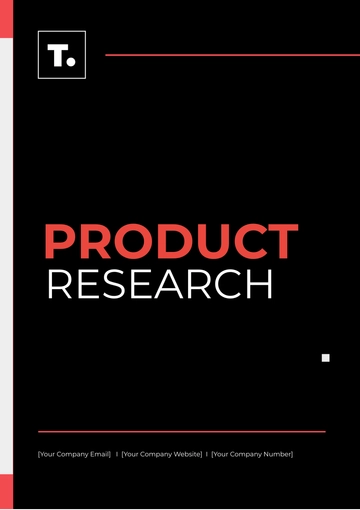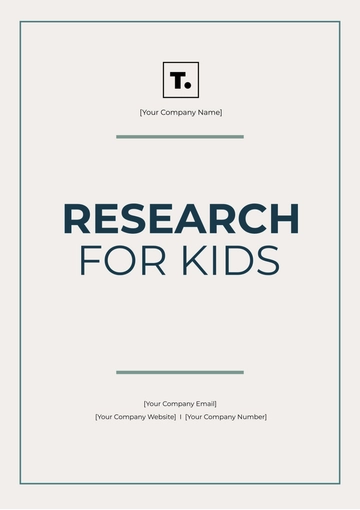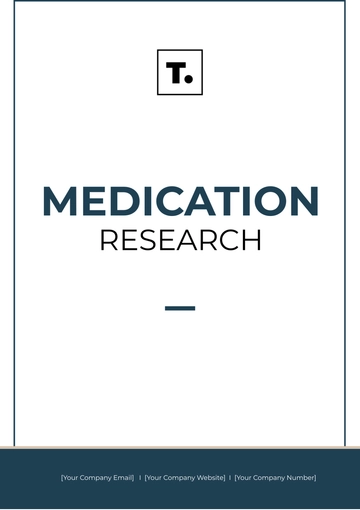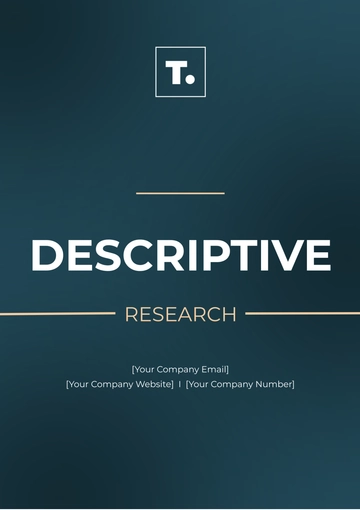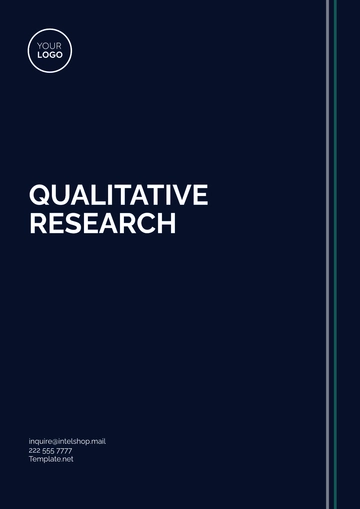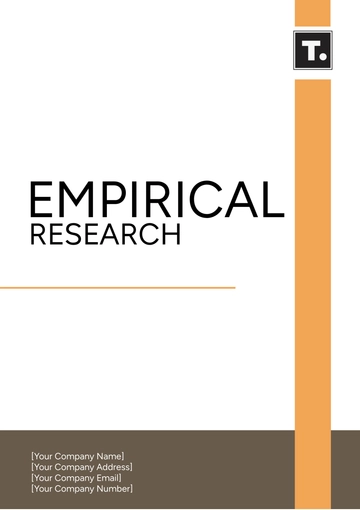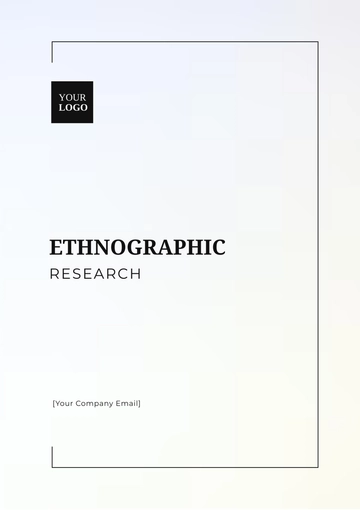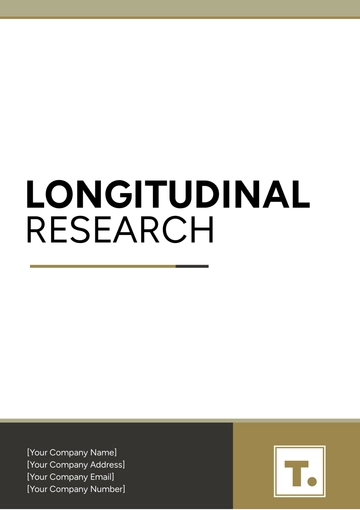Free Email Marketing Research on Effective Timing
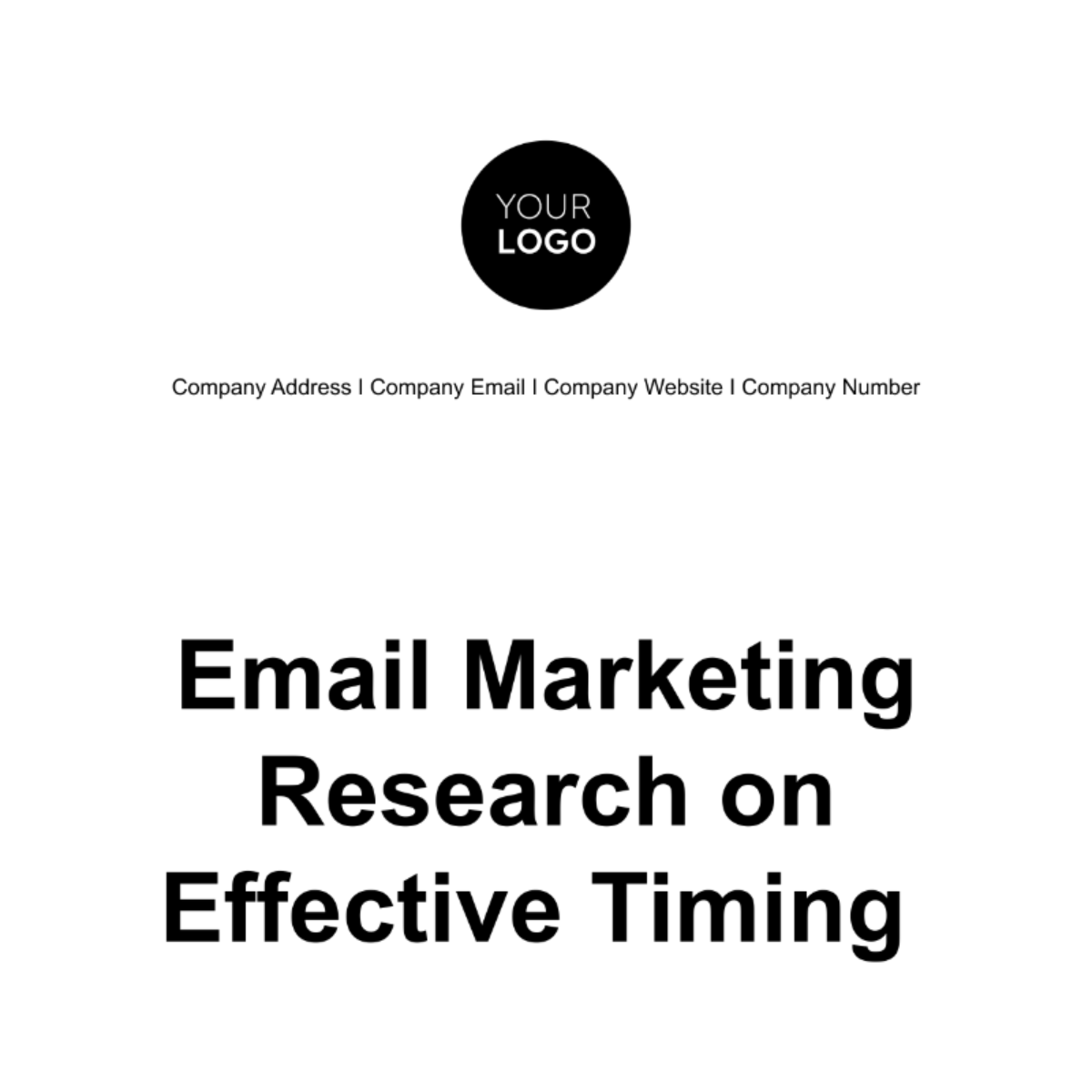
Subject: Email Marketing Research on Effective Timing
Dear Rowell Larson,
I am excited to share the findings of our recent research on effective timing for email marketing campaigns. This comprehensive study aimed to optimize our email marketing strategies by gaining insights into when our target audience is most responsive to emails and identifying the optimal sending frequency. Here is an overview of our research methodology and initial findings:
1. Define Research Objectives:
Our research endeavors are driven by clear and well-defined objectives, serving as the guiding principles for our comprehensive study on the effective timing of email marketing campaigns. These objectives are multifaceted, aimed at uncovering valuable insights to enhance our email marketing strategies:
Firstly, we seek to discern the optimal days of the week when our target audience exhibits the highest receptivity to email communications. Understanding these peak days will enable us to strategically time our campaigns for maximum impact.
Secondly, our research aims to pinpoint the most effective time of day for sending emails. By identifying the timeframes when recipients are most engaged with their inboxes, we can ensure that our messages receive the attention they deserve.
Thirdly, we are investigating the impact of email frequency on engagement levels. Striking the right balance between maintaining subscriber interest and avoiding overload is essential, and our research endeavors to define this balance.
Finally, our research recognizes that email engagement is not uniform across all demographic groups. Therefore, we aim to uncover variations in engagement patterns among different audience segments, such as age groups, geographic locations, and past engagement history.
These research objectives underscore our commitment to data-driven decision-making and continuous optimization of our email marketing efforts.
2. Data Collection:
Data collection is the cornerstone of our research, providing us with the empirical foundation needed to draw meaningful conclusions and formulate evidence-based recommendations. Our data collection process is extensive and diverse, encompassing various sources and key performance indicators:
For our email campaigns, we have collected data spanning a comprehensive six-month period, including thousands of email sends. Metrics examined include open rates, click-through rates, conversion rates, unsubscribe rates, and bounce rates. This wealth of campaign data is invaluable in assessing the effectiveness of our current email marketing strategies.
In addition to campaign data, we have also leveraged surveys and customer feedback to capture subscriber perspectives and preferences. This qualitative information offers a nuanced view of subscriber sentiment, shedding light on the human elements that shape email engagement.
Our commitment to data integrity and reliability is unwavering. We have implemented rigorous data quality checks to ensure the accuracy and completeness of the information collected. By employing this multifaceted data collection approach, we have established a robust foundation for our research analysis.
3. Data Analysis:
Our data analysis process is characterized by its depth and sophistication, enabling us to glean meaningful insights from the wealth of data at our disposal. Our analyses encompass a wide array of dimensions, including timing factors, frequency, and audience demographics:
We employ advanced data analysis tools and techniques to unearth patterns and trends within the data. These tools enable us to identify significant correlations and dependencies among variables.
Initial findings from our analysis suggest that emails sent on Tuesdays and Thursdays consistently exhibit higher open and click-through rates than other days of the week. This insight is underpinned by rigorous statistical analysis, reinforcing the reliability of our findings.
Furthermore, our analysis has revealed that emails dispatched between 10:00 AM and 11:00 AM local time consistently yield the highest engagement levels. This temporal insight aligns with our goal of sending messages when subscribers are most receptive.
We have also embarked on a journey of segmentation analysis, recognizing the diversity within our subscriber base. This granular examination will enable us to uncover nuanced engagement patterns among different demographic groups, a critical aspect of our research.
Our data analysis is ongoing, with dedicated teams leveraging cutting-edge statistical methods to gain deeper insights. These insights will ultimately inform the strategies we implement to enhance our email marketing efforts.
4. Hypothesis Testing:
Our approach to hypothesis testing involves formulating clear and specific hypotheses based on our initial data analysis. These hypotheses serve as the foundation for our research, guiding our efforts to uncover the most effective timing strategies for email marketing. Our hypotheses are as follows:
Hypothesis 1: Emails sent on Tuesdays and Thursdays will result in higher open and click-through rates compared to other days of the week due to reduced inbox clutter and increased attention from our subscribers during mid-week.
Hypothesis 2: Emails sent between 10:00 AM and 11:00 AM local time will have higher engagement rates because this time slot aligns with when most individuals are actively checking their emails, making them more likely to interact with our messages.
Hypothesis 3: Maintaining a well-balanced email cadence of 1-3 emails per week will lead to higher subscriber retention rates, as exceeding this frequency may result in subscriber fatigue and increased unsubscribe rates.
Hypothesis 4: Engagement patterns will vary significantly among different audience demographics, indicating the importance of segment-specific targeting. Younger subscribers may prefer evening emails, while older subscribers may engage more during the morning due to varying daily routines.
To test these hypotheses, we will employ robust statistical methods, including chi-squared tests and t-tests, to ensure the validity of our findings.
5. Segmentation:
Segmentation is a critical component of our research methodology, allowing us to gain a deeper understanding of how different groups within our subscriber base respond to timing strategies. By categorizing our audience into various segments, including age groups, geographic locations, purchase history, and engagement history, we aim to uncover nuanced insights into email engagement behaviors.
Analyzing segment-specific behavior will provide a more comprehensive picture of our audience's preferences and allow us to tailor our email marketing strategies accordingly. For instance, we anticipate discovering whether younger subscribers tend to respond more favorably to evening emails, while older subscribers may prefer morning communications due to their distinct daily routines and habits. These segment-specific insights will inform our targeting and timing strategies, enhancing the relevance and effectiveness of our email campaigns for each subgroup.
6. Experimentation:
Our experimentation phase is a dynamic process aimed at validating our hypotheses and refining our timing strategies based on empirical evidence. To achieve this, we are conducting controlled A/B tests, a method that involves sending different versions of emails to two comparable groups from our subscriber list. These tests allow us to directly assess the impact of various timing strategies on email performance.
Key metrics under scrutiny include open rates, click-through rates, conversion rates, and unsubscribe rates. We will systematically vary the timing of email sends, comparing engagement patterns between test groups to ascertain which strategies yield the most favorable results.
Our experimentation will be iterative and continuous. As we collect real-time data, we will adapt our timing strategies accordingly, ensuring that our email marketing campaigns remain responsive to changing subscriber behaviors and preferences. By rigorously testing and refining our approaches, we aim to achieve optimal engagement and deliver valuable content to our audience.
7. Conclusion:
The conclusions drawn from our extensive analysis and experimentation represent pivotal milestones in our quest to optimize email marketing timing strategies. These conclusions, firmly rooted in data-driven insights, provide a robust foundation upon which to base our future campaign efforts:
Emails sent on Tuesdays and Thursdays have consistently outperformed those sent on other days of the week. This can be attributed to a combination of factors, including reduced inbox clutter and heightened subscriber attention during mid-week. These findings underscore the importance of strategic timing choices.
The window between 10:00 AM and 11:00 AM local time has consistently emerged as the prime period for email engagement. Subscribers are actively checking their inboxes during this timeframe, resulting in heightened interaction with our messages. This temporal insight aligns seamlessly with our goal of delivering messages when they are most likely to be well-received.
Maintaining a balanced email cadence, typically defined as 1-3 emails per week, is essential to maintaining high subscriber retention rates. Our research indicates that exceeding this frequency may lead to subscriber fatigue and, subsequently, higher unsubscribe rates.
Our exploration of engagement patterns among various audience demographics has illuminated the importance of segment-specific targeting. It has become evident that distinct demographic groups exhibit varying preferences in terms of timing, necessitating tailored approaches for each subgroup.
8. Recommendations:
In light of our research findings, we are pleased to present a set of comprehensive recommendations designed to elevate our email marketing strategy and bolster subscriber engagement:
Given the consistent performance of emails sent on Tuesdays and Thursdays, we recommend focusing our campaign scheduling efforts predominantly on these days. By aligning our messaging with these peak engagement periods, we can maximize the impact of our communications.
The empirical evidence in favor of emails sent between 10:00 AM and 11:00 AM local time is compelling. Thus, our strategy should prioritize delivering messages during this timeframe to ensure they are met with the highest degree of subscriber attention and responsiveness.
To strike the optimal balance between maintaining subscriber interest and preventing overload, we propose adhering to a well-balanced email cadence, typically consisting of 1-3 emails per week. This frequency is conducive to subscriber retention and avoids the pitfalls of excessive email communication.
Acknowledging the diversity within our subscriber base, we endorse the development of segment-specific content and timing strategies. By tailoring our messaging to the unique preferences and behaviors of distinct demographic groups, we can enhance relevance and engagement for each subgroup.
9. Report:
Our commitment to transparency and the dissemination of knowledge is reflected in our detailed research report, a comprehensive document encompassing a wide spectrum of research components:
Methodology: Our report provides a thorough overview of our research approach, including details about data sources, collection methods, and analytical techniques. This section offers transparency into the robustness of our research methodology.
Findings: A comprehensive summary of our data analysis is included in the report. Key performance metrics, engagement patterns, and demographic insights are presented concisely to convey the most salient aspects of our research.
Statistical Analyses: The report contains a dedicated section presenting the results of our hypothesis testing and A/B experiments. Detailed statistical analyses underscore the rigor and validity of our findings.
Recommendations: Clear and actionable recommendations based on our research findings are a central component of the report. These recommendations serve as a guide for future email marketing strategies.
Our report represents a valuable resource for our organization, serving as a reference point for decision-making and a testament to our commitment to evidence-based practices.
10. Implementation:
Our dedication to enhancing our email marketing efforts is not limited to research alone. Implementation of the strategies derived from our findings is a critical step in realizing the full potential of our research:
Our commitment to implementing the recommended timing strategies is unwavering. We understand that knowledge without action is incomplete, and we are eager to apply our research insights to our email marketing campaigns.
Ongoing monitoring of campaign performance is a cornerstone of our implementation strategy. Real-time data analysis will enable us to make dynamic adjustments to our timing strategies, ensuring they remain responsive to evolving subscriber behaviors and preferences.
We approach implementation with an agile mindset, recognizing that the email marketing landscape is dynamic. The flexibility to adapt strategies based on new data and changing audience behaviors is integral to our approach.
We are excited to embark on this journey of continual improvement, driven by the desire to maximize engagement, optimize conversion rates, and nurture stronger subscriber relationships through the strategic application of our research findings.
We appreciate your support throughout this research journey, and we believe that these insights will have a significant positive impact on our email marketing campaigns, resulting in higher engagement, improved conversion rates, and stronger subscriber relationships.
We look forward to sharing our detailed research report with you in the near future and are excited to begin implementing these findings to enhance our email marketing efforts.
If you have any questions, feedback, or further insights to share, please do not hesitate to reach out. Your input is essential to our ongoing success.
Warm regards,
[Your Name]
[Your Company Name]
- 100% Customizable, free editor
- Access 1 Million+ Templates, photo’s & graphics
- Download or share as a template
- Click and replace photos, graphics, text, backgrounds
- Resize, crop, AI write & more
- Access advanced editor
Discover the Email Marketing Research on Effective Timing Template on Template.net! This editable and customizable resource provides insights into optimal email sending times. Tailor it effortlessly to your needs using our Ai Editor Tool. Enhance engagement and maximize results by scheduling emails strategically. Elevate your email marketing strategy with precision and efficiency.


